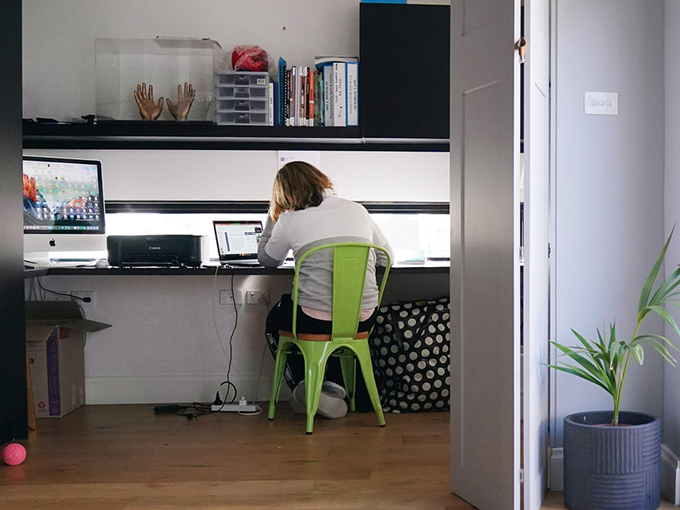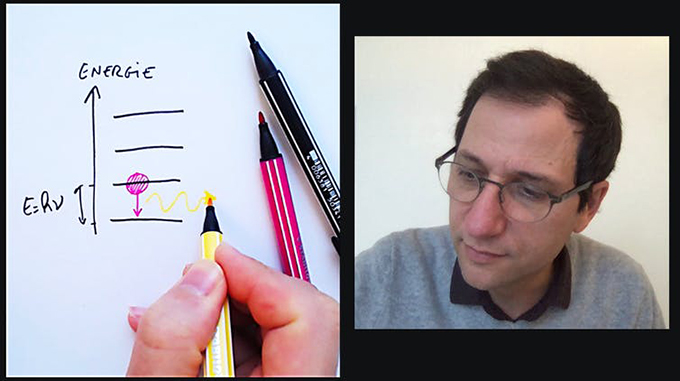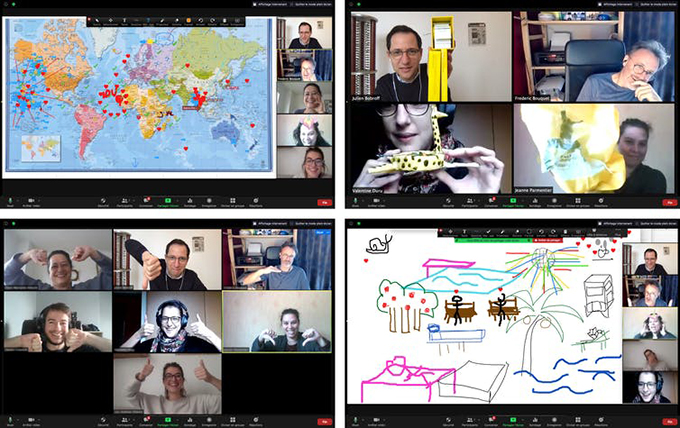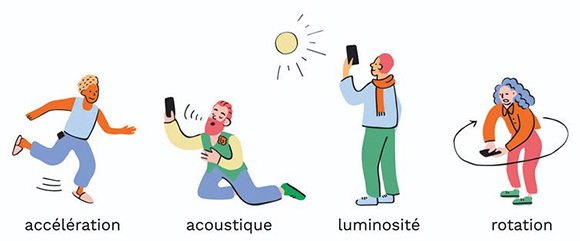 The Covid-19 crisis has imposed distance education on everyone, not without pain . At the University, our students have been almost exclusively at a distance for almost a year! These successive confinements have had serious consequences. First there were the technical issues, the poor network connection, insufficient computer equipment, the difficulty in isolating yourself from others.
The Covid-19 crisis has imposed distance education on everyone, not without pain . At the University, our students have been almost exclusively at a distance for almost a year! These successive confinements have had serious consequences. First there were the technical issues, the poor network connection, insufficient computer equipment, the difficulty in isolating yourself from others.
Then, very quickly, we discovered other deeper difficulties, students confined in small rooms with intermittent wifi, others encountering economic and social difficulties in addition to psychological problems.
As for the teachers, we have all had to adapt and modify our way of teaching to overcome the constraints of distance as best we can. At the University of Paris-Saclay, we have tested several new practices and tools, we have tested them with our students, we have shared them among us. Here are five, five simple tips to implement, which have allowed us, at least in part, to improve our daily life as confined teachers.
Using platforms differently
During the first confinements, we often had to keep things simple, offering students slide shows commented on the microphone as lessons. But we quickly felt the limits of this format, the weariness it causes among our students, regardless of the platform used: Zoom, Collaborate, Teams, Meet, etc.
This is where we discovered the OBS software . Used initially by YouTubers to make their videos more lively, this free software allows the speaker to very simply alternate different scenes, sometimes showing his face full screen, sometimes a notebook on which he writes, sometimes his face next to it. ‘a slide show, sometimes a video.

Thanks to OBS, his computer, and a smartphone, we can reinvent the blackboard.
In a five-minute tutorial , we show you how to take this tool in hand and become your own “TV director”, at little cost. Lessons become surprisingly more lively, whether they are delivered live or recorded in advance.
This also makes it possible to use a second webcam, or, failing that, a smartphone , to film a sheet of paper on which you can write and draw live. In use, this new way of managing different views allows you to rethink the dynamics of your class sessions.
Encourage exchange
What teacher has not experienced this chilling moment when he finds himself alone, in front of his camera, the webcams and microphones of the students remaining closed? We have experimented with several solutions to improve the situation.
- “Reply in the chat” is an effective first way to create a dialogue.
- The variant “Draw the answer on the shared board” takes advantage of this tool present on many platforms.
- We can also launch surveys at regular intervals among students, multiple-choice questions, maps or images to click, open questions… There are many solutions integrated into the platforms, we also use Wooclap and Google Form .
Another possible remedy: “ice-breakers”, small informal games to create a friendly and benevolent atmosphere and encourage students to open their webcams when it is possible for them. We can offer small games where the student answers TRUE / FALSE by opening / closing his webcam. Or the challenge of “the most original virtual wallpaper” on an imposed theme. We imagined about twenty of these “ice-breakers” which can cause playful breaks in the middle of more austere content.

Some ice-breakers: point where you want to go on vacation / bring back a yellow object in less than a minute / answer a question with your thumbs / draw together on a theme.
Finally, working in small groups also makes it possible to escape entirely top-down teaching and at the same time create a bond between students. For this we use the free platform Discord . Coming from the world of video games, it allows you to alternate sequences in whole class or in small groups, everyone navigates from one place to another in a fluid way, everyone can share documents or their screen, even outside of class hours. Again, a few minutes are enough to get started .
Force students to stand up
Our students are stuck in front of their screens all day. To escape it, we can offer activities that engage the body. Several of us, for example, have developed remote experimental activities where our students have to carry out measurements with their smartphones .

In order for students to leave their screen, they can be asked to take a measurement with their smartphone. A. Khazina, Physics Otherwise
We also designed practical work for high school with the National Education. Beyond their scientific interest, these activities lead students to extract themselves from the virtual whole, to get up and have to design or experiment themselves.
Outside the scientific field, we can imagine similar activities for rendering. Instead of asking our students for a written report or a slide, why not ask them for a video or a model, in short anything that forces them to detach themselves from the screens for a moment? Free editing tools (like Youcut on Android, VSDC on Windows, or iMovie on Mac) will allow them to design these videos in minutes.
Allow students to escape the everyday
The confinement is monotonous, always the same routine and the same setting, like the movie Un jour sans fin . To escape it, we have developed pedagogies based on fiction. In these lessons, we offer students to live in a fictional universe where they play a role just like their teachers. For example, they have to rescue a spaceship from a distance. It’s up to them to create, imagine, tinker, measure, from home but in teams.
Distance is an asset here: no need for large sets or costumes, a simple virtual background or an email with a header is enough to make people believe that it is NASA that is contacting them.
We also experimented with online escape games, like the one where you have to prevent the university from freezing due to a liquid nitrogen leak. A simple and effective tool, genial.ly , makes it possible to design such games, in particular thanks to tutorials from the very active S’Cape educational community .
Share with colleagues
Students are not the only victims of distancing. The teachers, too, are in a difficult and lonely situation. Establishing regular moments of discussion with colleagues can help you feel less alone.
At the Villebon-Georges Charpak Institute, we have set up weekly “zoom cafes” allowing everyone to come and discuss their problems or their educational findings, a sort of virtual teacher’s room. Beyond that, workshops were conducted between colleagues, to train together in the tools already mentioned. The form serves the substance: what could be more demonstrative than training in new methods of distance education precisely by doing it at a distance!
These five proposals have many limitations. They probably do not solve the basic problems of distancing. Above all, their overall effectiveness would need to be evaluated with a serious protocol. In the meantime, they have really improved our experience as teachers, and it is already that.
Author Bios: Julien Bobroff is a Physicist, University Professor and Frédéric Bouquet is a Lecturer-researcher in physics both at the Université Paris-Saclay and Jeanne Parmentier who is a Research engineer at the Villebon Institute – Georges Charpak
